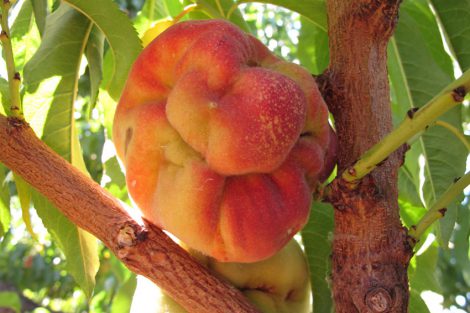In this Issue
- Peach Problems Seen at Harvest (photo gallery)
- Commercial Growers: Workshop on conserving beneficial insects, Sept 28 in Kaysville
- Commercial Growers: Watch for IPM Survey in the mail
- New USU fact sheet: Leafroller Pests of Orchards
Peach Problems Seen at Harvest
Peach harvest is on, and we’ve seen a variety of fruit damage, ranging from wind injury, powdery mildew, coryneum blight, earwigs, birds, and more. Check out the photo gallery to identify what you may be seeing during harvest.
Announcements
Commercial Growers: Workshop on conserving beneficial insects, Sept 28 in Kaysville

What: The Xerces Society and the Utah IPM Program are hosting a workshop on conservation biological control, covering:
- Identification of predators and parasitoids that attack insect pests.
- Recognizing the habitat needs of beneficial insects.
- Design and implementation of habitat improvements, including site preparation, insectary strip plantings, hedgerows, beetle banks, and more.
- The current best management practices that minimize land-use impacts on beneficial insects and mitigate exposure to insecticides.
When: Thursday, September 28
Where: Kaysville Education Center and Farm
How: Registration is $45 and includes a packet of materials from the Xerces society, including their book, Farming with Native Beneficial Insects.
Commercial Growers: Watch for the 2017 IPM Tree Fruit Survey in the Mail
 The Utah IPM Program is working with the Utah office of the National Agricultural Statistics Service to determine the use of IPM in tree fruits, and how it is affecting profits. Be on the lookout for the envelope from NASS, and please be sure to fill out and return the survey! The results will help the IPM Program to continue to serve the needs of our fruit growers.
The Utah IPM Program is working with the Utah office of the National Agricultural Statistics Service to determine the use of IPM in tree fruits, and how it is affecting profits. Be on the lookout for the envelope from NASS, and please be sure to fill out and return the survey! The results will help the IPM Program to continue to serve the needs of our fruit growers.
New Fact Sheet on Leafroller Pests

Entomologist, Diane Alston, and Marion Murray conducted a 2-year project to identify the primary leafroller species causing damage to Utah orchards. Obliquebanded leafroller was the most common, primarily causing injury to tart cherries, and contaminating tart cherry harvest bins.
Click here to access the fact sheet that describes the leafroller species we found, including their biology, management, and where they occur.
























